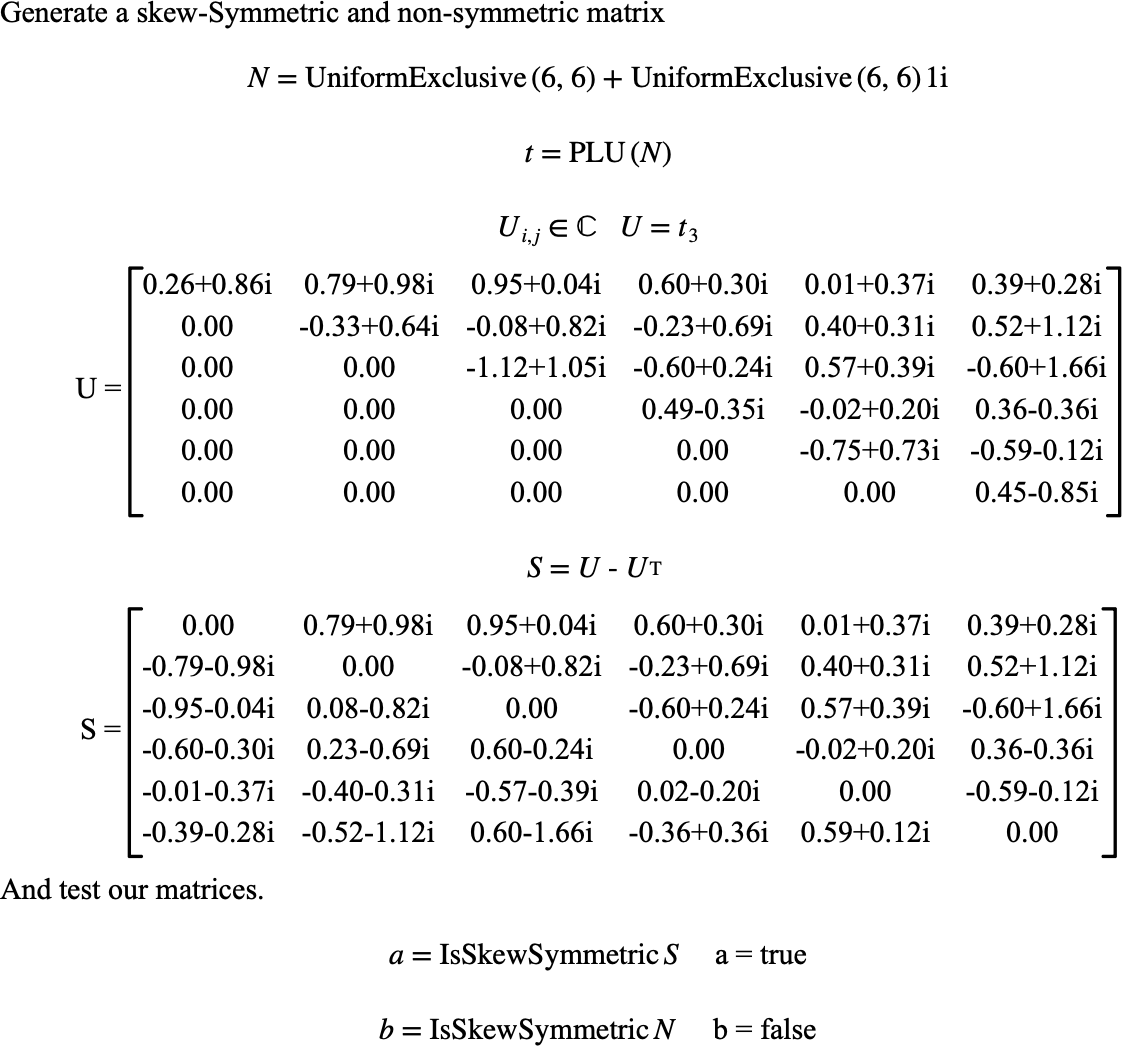\(\text{IsSkewSymmetric}\)¶
You can use the \(\text{IsSkewSymmetric}\) function to determine if a matrix is skew symmetric.
You can use the \isssymmetric backslash command to insert this function.
The following variants of this function are available:
\(\text{boolean } \text{IsSkewSymmetric} \left ( \text{<matrix>} \right )\)
\(\text{boolean } \text{IsSkewSymmetric} \left ( \text{<matrix>}, \text{<relative tolerance>} \right )\)
The \(\text{<matrix>}\) parameter is the matrix to be tested. The optional \(\text{<relative tolerance>}\) parameter specifies the tolerance to apply when comparing values. If not specified, the \(\text{IsSkewSymmetric}\) function will use a tolerance of \(1.0 \times 10^{-8}\).
A matrix, \(M\), is considered skew symmetric if the matrix is square and \(M _ { i, j } = - M _ { j, i }\). This function relaxes this constraint by allowing a test within a given tolerance. The \(\text{IsSymmetric}\) function considers a matrix to be skew symmetric if the matrix is square and:
For all \(1 \leq i \leq \text{nrows} \left ( M \right )\) and \(1 \leq j \leq i\) where \(t _ {rel}\) is the relative tolerance. Note that this test is only applied if \(M _ { i,j } \ne - M _ { j,i }\).
Figure 164 shows the basic use of the \(\text{IsSkewSymmetric}\) function.

Figure 164 Example Use Of The IsSkewSymmetric Function¶
